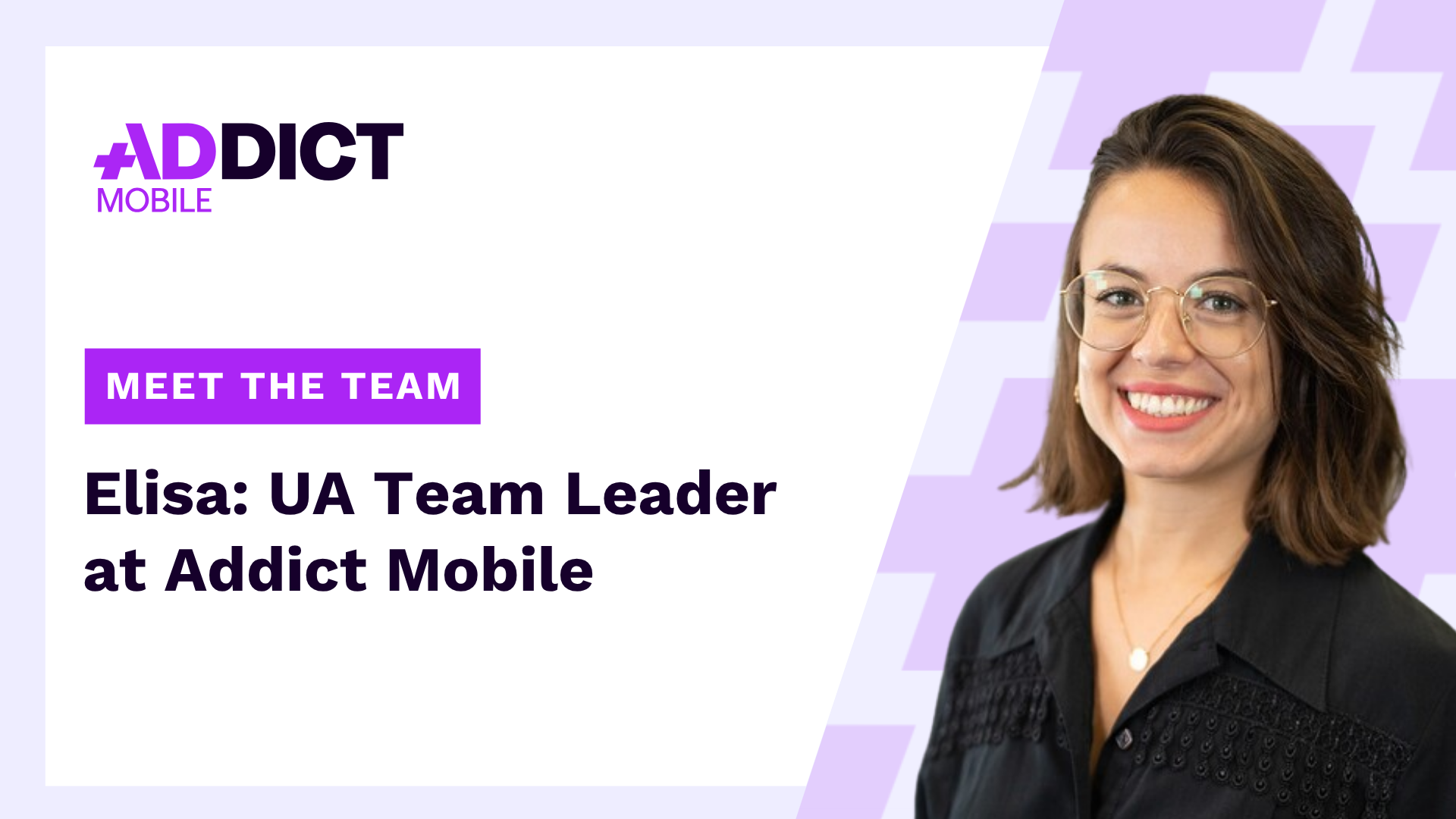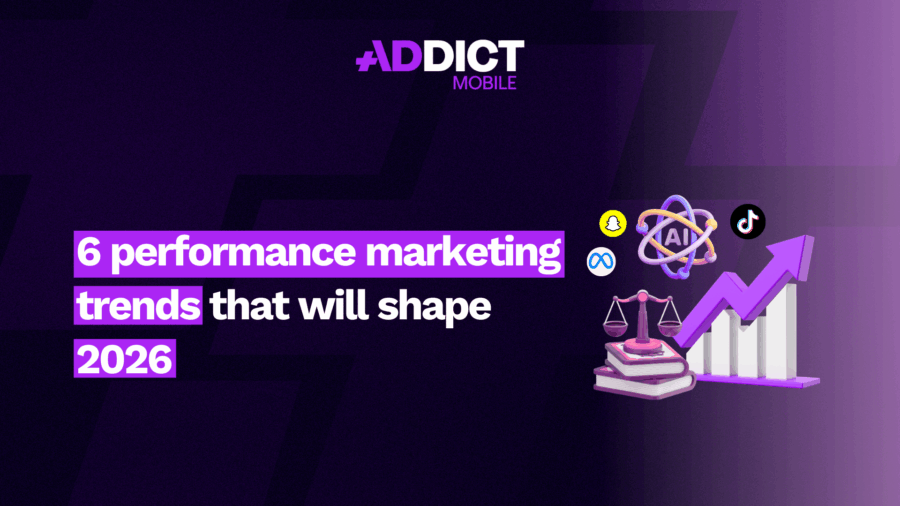Interview with Elisa Lopez, UA Team Leader

Meeting with Elisa, UA Team Leader at Addict Mobile.
Since 2020, Elisa has been supporting her clients with App and Web strategies, adopting a performance-driven approach tailored to the specific challenges of each channel.
Balancing strategy, project management, and team leadership, she juggles the many aspects of her role on a daily basis. In this interview, she shares her vision of hybrid acquisition, the synergies between App and Web, and her responsibilities as a team manager.
What are your main responsibilities at Addict Mobile?
I’m a UA Team Leader, so my role is quite broad. First, I manage my team and support them across all ongoing projects. My role is very strategy- and client-oriented: I make sure we’re making the right choices, building relevant recommendations, and staying aligned with the objectives. I also remain hands-on when needed.
At the same time, I’m part of the Analytics team: when we’re in talks with a prospect, I analyze ad accounts and analytics tools to identify opportunities, and I prepare strategic recommendations along with a media plan.
Lately, I’ve also been involved in RFPs. It’s a more in-depth exercise because you need to respond to a precise brief and evaluate how Addict Mobile can meet all the client’s needs. These are often high-stakes projects and true team efforts, carried out with management, the sales team, and members from the operational and creative teams.
You manage both App and Web campaigns: what are the similarities and differences?
Broadly speaking, the acquisition logic is the same: we think in terms of strategy, account structure, bidding, tracking… But the technical part really differs.
For App campaigns, everything typically runs through MMPs. Attribution is clearer between sources, data is better structured, and we generally know what to expect. On Web, it’s more varied: setups differ greatly from client to client, and we’re often limited by the tools—especially Google Analytics. Since it’s very Google-focused, it quickly becomes tricky to track what happens outside that ecosystem, especially on social platforms. So we have to guide clients differently on data and tracking.
How does App and Web expertise adapt to different client needs?
Having dual App and Web expertise lets us adapt to any situation. Every client has their own goals, user journeys, and technical constraints. The idea is to avoid siloed channels and build an approach truly driven by performance.
- When the client needs to manage both App and Web strategies in parallel
This is often the case for hybrid clients who have both an app and a website. In such cases, we manage a single global budget, guided solely by performance. Regardless of the channel, we push what works best.
This is even more relevant today as tools evolve: some MMPs now support Web tracking, and Google Analytics has improved its cross-device tracking. With hybrid formats offered by platforms, some campaigns even let the algorithm choose whether to redirect users to the App or the Web based on their profile.
In some cases, we can also tailor campaigns by funnel stage—for instance, using Web to drive sign-ups, then converting within the App.
- When the client switches from one channel to another based on their goals
Sometimes a client with a Web-first history decides to launch an App (or the other way around). In these cases, my dual experience really adds value.
For example, tracking and reporting are often more reliable on App thanks to MMPs. If the client is highly data-driven, I may steer them toward App for certain levers. Conversely, Web offers campaign formats not available on App—especially higher funnel formats or certain platforms.
Having that big-picture view allows us to propose more balanced strategies, adapting activation to each channel, funnel stage, and objective.
As a Team Leader, how do you support your team on a daily basis?
I’m very present and available day-to-day to prevent bottlenecks. The goal is to give them autonomy while staying close. We organize regular check-ins to track project progress, ensure things are running smoothly, challenge some approaches, and find solutions together for client issues.
I encourage them to think for themselves. When a problem arises, I don’t immediately give the answer. We take time to explore different options, so they can test, find solutions on their own, and build their skills.
This mindset is widely shared at Addict: we’re focused on continuous development. The ultimate goal is for everyone to become more autonomous… and for the student to eventually surpass the teacher.
What’s your favorite way to unwind after a long day?
I switch roles! When I get home, I take care of my daughter. It’s not exactly a break, but definitely a shift. Going from dashboards to playtime is a great way to change scenery… and of course, screen-free!
NEWS
Article in relation

Our 5 Favorite Creative Tools on TikTok
Having good creatives is essential. But what truly makes the difference is knowing where to find inspiration and how to produce more efficiently...
Published on 10 December 2025
6 performance marketing trends that will shape 2026
2026 is shaping up to be a pivotal year for performance marketing. With new growth channels emerging, AI-driven automation accelerating, evolving measurement models,...
Published on 2 December 2025
Best ASO tools to grow your app store…
– by Oriane Ineza, Content Marketing Specialist at AppTweak In an increasingly competitive app market, visibility is everything, and a solid, comprehensive set...
Published on 30 November 2025

